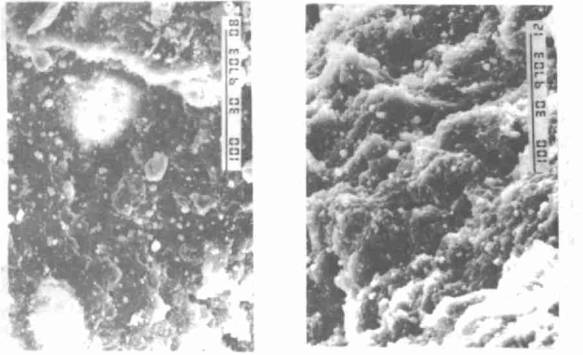Active calcium in rubber refers to calcium compounds, like calcium carbonate (CaCO3) or calcium stearate. These are often used as fillers or processing aids in rubber formulations. These compounds can affect rubber’s properties. They include its strength, flexibility, and thermal stability.
For rubber, calcium carbonate is the third largest inorganic filler after carbon black and silica. It can improve the tensile strength of rubber vulcanizates. It has a reinforcing effect in natural and synthetic rubber.
Improve the rubber compound by:
- Reducing production costs.
- Increasing strength and wear resistance.
- Boosting tear resistance.
- Raising plasticity.
- Adjusting the Mooney viscosity.
- Easing molding.
- Stabilizing product dimensions.
Calcium carbonate has the characteristics of wide resources, low toxicity and pollution, high whiteness, large filling volume and low price. It is widely used in the rubber industry and is the main light-colored filler for rubber products.
Calcium carbonate is divided into heavy calcium carbonate, light calcium carbonate, nano calcium carbonate and modified calcium carbonate. Calcium carbonate products play different roles in rubber products, so their application fields differ slightly.
Heavy calcium carbonate + rubber
Heavy calcium carbonate is a commonly used powdered inorganic filler. It has high purity, inertness, and stability. It is very white, with low oil absorption and refractive index. It also disperses well. It has a poor reinforcing effect on rubber products, mainly as filling. It plays a filling and compatibilizing role in natural rubber, synthetic rubber and latex. It can make the rubber material strong and easily dispersed in the rubber material. It can also be used as an isolation agent or release agent. Those with a whiteness higher than 90% can also be used as a Whitening agent.
Heavy calcium carbonate vulcanized rubber has worse properties than light or modified versions. Its wear resistance and elongation stress are also worse than those of carbon black, clay, or silicate vulcanized rubber. Also, large, heavy calcium carbonate particles will reduce the properties of the vulcanized rubber. Its production cost is low. Its use with other agents in rubber can adjust the vulcanized rubber’s properties and reduce costs.
Heavy calcium carbonate is widely used as an inert filler in natural rubber, styrene-butadiene rubber, latex, etc. It is suitable for manufacturing heels, soles, floors, hoses, foam products, molded products, and extruded products.
Light calcium carbonate + rubber
Modified calcium carbonate, also known as activated calcium carbonate, is produced by surface modification of light calcium carbonate and nano-calcium carbonate using surface modifiers. Compared with before modification, calcium carbonate after modification generally has the characteristics of smaller particle size, lower oil absorption value, good dispersion, and good reinforcement.
The reinforcing properties of modified calcium carbonate are far better than those of unmodified calcium carbonate. Its reinforcing properties are mainly because the surface modifier is an organic substance with amphiphilic groups; it has hydrophilic and lipophilic groups. Surface modifiers combine calcium carbonate and rubber closely through two groups, which is beneficial to improving the physical and mechanical properties of rubber, processing performance, elongation, tensile strength, tear strength, and other properties of products.
Nano calcium carbonate + rubber
Nanometer calcium carbonate powder is better than ordinary calcium carbonate powder. It has a small size effect and a high surface effect. These give it unique properties that ordinary calcium carbonate lacks. It mainly acts as reinforcement, filling and color adjustment in rubber products.
Nano calcium carbonate is highly active. Its reinforcement is better than light calcium carbonate. It is equal to precipitated silica. Nano-calcium carbonate has good dispersion and compatibility in rubber. It makes the rubber easy to mix and disperse. This improves the rubber’s processing and the product’s mechanical properties. At the same time, nano-calcium carbonate has a spatial three-dimensional structure and various particle shapes. Studies show that different crystal forms of nano-calcium carbonate have varying effects on reinforcing rubber. Among them, interlocking nano-calcium carbonate has the best reinforcing effect on rubber.
It is worth noting that it can be used alone as a reinforcing filler and in conjunction with other fillers according to production needs. It can not only achieve the functions of reinforcing, filling, improving processing technology and improving product performance, but also has the function of whitening. Functions and partially replaces expensive white fillers such as silica and titanium dioxide.
The rubber industry is also one of the main fields of application for nano calcium carbonate. It is mainly used in the inner and outer rubber of car tires, special parts of automobile tire inner tubes and outer tires, tape hoses, rubber shoes, and rubber cloths. Suitable for NR, BR, SBR and other rubber systems.
Nano calcium carbonate products are used in rubber and have low requirements on hydrochloric acid insoluble matter, heavy metal content and pH value.
Modified calcium carbonate + rubber
Modified calcium carbonate, also known as activated calcium carbonate, is produced by surface modification of light calcium carbonate and nano-calcium carbonate using surface modifiers. Compared with before modification, calcium carbonate after modification generally has the characteristics of smaller particle size, lower oil absorption value, good dispersion, and good reinforcement.
The reinforcing properties of modified calcium carbonate are far better than those of unmodified calcium carbonate. Its reinforcing properties are mainly because the surface modifier is an organic substance with amphiphilic groups; it has hydrophilic and lipophilic groups. Surface modifiers combine calcium carbonate and rubber closely through two groups, which is beneficial to improving the physical and mechanical properties of rubber, processing performance, elongation, tensile strength, tear strength, and other properties of products.
Comparison of SEM photos of unmodified calcium carbonate and modified calcium carbonate:


Modified calcium carbonate is mainly used in rubber products such as tires, hoses, tapes, oil seals, and auto parts and is suitable for NR, NBR, SBR, and other rubbers.
